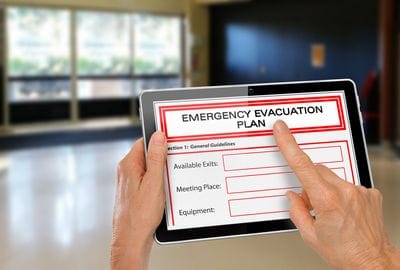AS 3745 Standard
)

Planning For Emergencies
Planning for emergencies is an integral part of the safety and security of every organisation and its personnel. In 2010, changes were implemented on the AS 3745 Standard by Australian Standards. This standard is also known as Planning for emergencies in facilities. With the new version in place, organisations are encouraged to update their practices and training procedures to comply with the legislation. Following is a brief overview of the differences as presented by the new standards.
ECO (Emergency Control Organisation) Authority
The ECO must have the authority known to and recognised by the managers, facility owners, and occupants of the building. Senior management and employers must be advised regarding the authority of the ECO to act accordingly in case of emergencies.
Emergency Management Plan
AS 3745 proposes the ideal emergency plan structure that should include additional elements such as:
- Information regarding the purpose and structure of the EPC (Emergency Planning Committee)
- Information describing the emergency and fire safety features of the building
- The facility's organisational arrangements
There Are Also Separate Sections That Detail Recommendations For The Following:
- The outcome of emergency identification.
- Pre-emergency and post-emergency response procedures.
- Training arrangements.
- Diagram of the evacuation plan.
- The validity period of the facility's emergency plan as determined by the EPC.
- Issue or amendment date of the emergency plan to be indicated on each page.
How is the Emergency Plan Distributed?
All members of the EPC should have a copy of the emergency plan. ECO members, as well as occupants of the facility, must have access to sufficient information regarding the plan. This will ensure that every human occupant in the building has a good understanding of the actions they need to take in case of an emergency.
Important Elements of The Emergency Plan
The updated AS 3745 includes several new or modified elements, such as:
- Determination of the ECP (emergency control point) location and its alternative to cover for contingencies.
- Information/instructions for using emergency response equipment that may be available in the facility.
- Outline for different options for evacuation, such as full and partial evacuation, and shelter-in-place. This element must also include considerations for senior members, access to hospitals, lockdowns, etc.
- Characteristics of external sources and their expected hazards.
- Nomination of persons who will be authorised to provide and release media statements if necessary.
- Considerations for any occupant or visitor who may have a physical disability.
Standardised Colour Codes
Evacuation maps should use standardised codes under AS 3745 Standard to identify specific incidents. The colour code is as follows:
- Red Fire or Smoke
- Blue Medical Emergency
- Purple Bomb Threat
- Yellow Internal/Infrastructure Emergencies
- Black Personal Threat
- Brown External Emergency
- Orange Evacuation
Evacuation Exercises
Evacuation exercises are necessary to familiarise the occupants with current emergency procedures. At the minimum, every department and area should participate in one exercise every 12 months. Only the EPC is allowed to exempt any occupant from taking part in the exercises with a written note.
Applications of AS 3745 Standard
The AS 3745 Standards are applicable to structures, buildings, and workplaces that have human occupants. The exception to this standard covers Class 1a buildings (Building Code of Australia definition). However, the exception is waived if the structure is occupied as a workplace.
Training
All the training activities that will be conducted and supervised must be done by competent personnel. For positions such as chief warden, deputy warden, communications officer, and other deputies, additional training must be conducted. Training should also be provided for all occupants and new occupants even if they are casual or temporary occupants. The training activities should be conducted for all occupants once each year at the very least.
Legal Obligation
Currently, the Australian Standard is considered as a guideline for safety and security and is recommended to ensure the integrity of organizations. The standards, however, are not legally binding. They are only considered as such if they are included in the legislation or contract.
You can also check this blog for more info Emergency Evacuation Plan.


)
)
)
)
)
)
)
)
)
)
)
)
)
)
)
)
)
)
)
)
)
)
)
)
)
)
)
)






